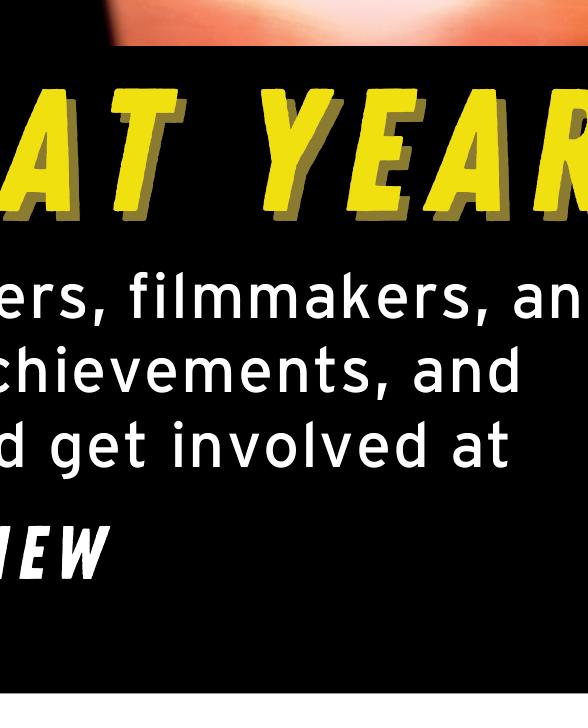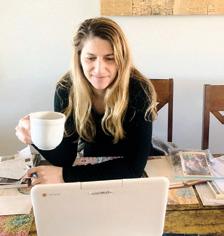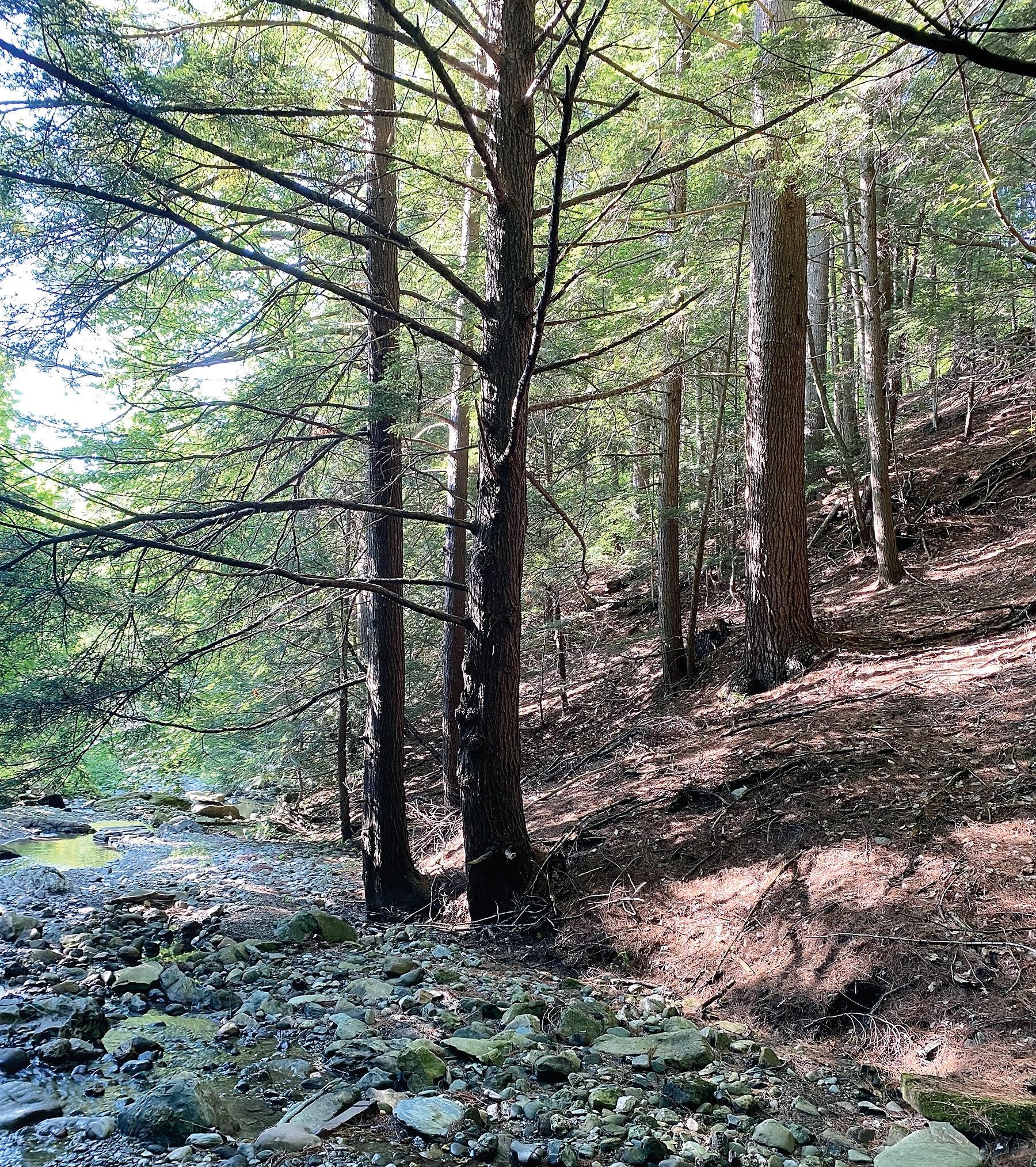Hinesburg gauges public safety services
COREY MCDONALD STAFF WRITERFirst it was the ambulance service. By the end of February, Hinesburg announced it was postponing attempts to create its own ambulance service, citing a lack of available staff. Then in March, voters handed the selectboard a mandate: reduce the size of its police budget. That cascaded into an exodus of the police staff and discussions with other towns about possibly combining services to address the shortage of available police.
For Hinesburg, 2022 presented town officials with an at times unclear question of what it wants its public safety services — police, fire and EMS — to look like and if it has the available resources and personnel to make that happen.
The town of roughly 4,700 is, over the next decade, set to undergo tremendous change — with more than 400 housing units on the horizon and an at least 15 percent increase in population projected.

Officials recognize this and wrapped up a tumultuous year with the hiring of a consultant to conduct its public safety stra-
This mourning dove knows how to keep warm in subzero temperaturres — puff out your feathers.


tegic plan, the first of its kind since 2008, to provide a comprehensive overview of its rescue services.

“What, generally, does public safety mean to residents of Hinesburg? We’re going to get a lot of different opinions,” town manager Todd Odit said. “The consultant
will distill those down and say, ‘Here’s what the consensus is, or the majority is, here are what other communities are doing, here are ways you can achieve that vision of public safety.’”
The start of the year began with the disappointing news: the town did not have the
available resources or staff to start its own ambulance service.
Contracting for decades with Saint Michael’s Fire and Rescue in Colchester, the town briefly considered starting its own

Community Notes
Shelburne church hosts January blood drive
St. Catherine of Siena Parish is partnering with the American Red Cross to host a Shelburne Community blood drive on Tuesday, Jan. 17, noon to 5 p.m., 92 Church St.
For more information or to make an appointment, call 800-733-2767 or sign up online at redcrossblood.org with sponsor code Shelburne.
CVU Christmas tree pick up
The CVU music program will be picking up Christmas trees in Shelburne for a $10 donation on Saturday, Jan. 7, from 9 a.m. 3 p.m.
Simply attached a check made out to “CVU Music” to your tree and place it on your curb. No need to call in advance. Call 802-2334917 if your tree hasn’t been picked up by 2:30 p.m. that afternoon.
Panel discussion explores climate, social justice
The League of Women Voters of Vermont, in partnership with Kellogg-Hubbard Library, presents “The Impact of Climate Change on Vermont” on Wednesday, Jan. 11, 7 p.m.


The panel discussion, moderated by Sen. Kesha Ram Hinsdale, will focus on the social justice aspects of climate change with panelists Kashka Orlow and Judy Dow. The program will be hosted on Zoom and is open to the public. Attendance is free. Register at https://bit.ly/3YOrCuF.
County historical society offers talk on Abenaki
On Sunday, Jan. 15 at 2 p.m. Ethan Allen Homestead Tavern hosts Vera Longtoe Sheehan, who will speak on “Abenaki Erasure,

Eugenics and Ethnocide.”
Longtoe Sheehan is the executive director of the Vermont Abenaki Artists Association and a citizen of the Elnu Abenaki Tribe. The program is co-sponsored by the Ethan Allen Homestead Museum and the Chittenden County Historical Society.
All are welcome.

Enjoy Age Well meals at Charlotte Senior Center
The Age Well meal pickup for Thursday, Dec. 29, is from 10-11 a.m., Charlotte Senior Center, 212 Ferry Road, and features beef stroganoff with onions and mushrooms, rotini noodles, brussels sprouts, dinner roll with butter, seasoned apples with cinnamon and milk.
You must have pre-registered by the prior Monday with Kerrie Pughe, 802-425-6345 or kpughe@ charlotteseniorcentervt.org
The Age Well meal pickup for Thursday, Jan. 5, features roast pork, apple Craisin gravy, diced potatoes, Harvard beets, wheat roll with butter, pumpkin cookie and milk.
The Age Well meal pickup for Thursday, Jan. 12, features meatloaf with sauce, vegetable gravy, mashed potatoes, peas and carrots, dinner roll with butter, banana Craisin oat cookie and milk.
The Age Well meal pickup for Thursday, Jan. 19, features oven fried chicken breast, diced potatoes with parsley, peas and onions, wheat roll with butter, date Craisin bar and milk.
The suggested donation is $5. Check the website for last-minute cancellations at charlotteseniorcentervt.org.

Governor appoints 52 to boards, commissions
Gov. Phil Scott appointed 52 individuals to state boards and commissions in November and
League wraps up diaper drive
The Junior League of Champlain Valley has an ambitious goal of raising $10,000 and collecting 50,000 diapers before the close of the year.
The Junior League hosts its final diaper dump on Saturday, Dec. 31, at the University of Vermont men’s hockey game against Lindenwood.
Through its diaper bank, the league distributes diapers and wipes to families struggling

the first half of December. Boards and commissions give Vermonters numerous opportunities to serve their state and communities. The governor’s office is currently soliciting
to meet basic needs across 13 of Vermont’s 14 counties. In September 2022, it distributed over 90,240 diapers statewide, and another 112,750 in October.
“A steady supply of diapers is critical for every family. We are grateful to the greater Vermont community for its contributions, recognizing it can cost up to $75 per month to diaper a child and no state or federal safety-net program allocates dollars for
the purchase of diapers,” said Amanda Herzberger, diaper bank chair.
Bring donations to the hockey game or they can be dropped at any Dee Physical Therapy location during regular business hours in the month of December, or at one of the league’s yearround diaper donation bins at Healthy Living Market in both South Burlington and Williston, and Hula in Burlington.
applications to fill vacancies and upcoming term expirations.
All those interested in serving on a board or commission should visit bit.ly/3WjUXeQ to apply.
Local appointments made
by the governor over the last six weeks include: Passenger Tramway Board, Mike Tarricone, Shelburne; and Community High School of Vermont, Joan Lenes, Shelburne.
Invest in community
WHY GO LOCAL?
Buying locally is a commitment to investing in your community. If you don’t do it, who will?

CVU student wins Vermont’s Congressional App Challenge
Jaden Parker is this year’s Vermont Congressional App Challenge winner.
Parker, a senior at Champlain Valley Union High School from St. George, is this year’s winner.


He created an app called Hollow Valley using the JavaScript and HTML programming languages.
When asked about how it feels to have won the challenge, he said, “If I had to summarize my feelings about winning to one word, I’d choose empowering. Computer programming is a fiercely competitive sector. While the coding itself is difficult, creating something of your own design requires a different level of creativity than I’m used to. I put some of my best work forward and a lot of hours. Winning this award makes it all feel worth it. I’m incredibly thankful to my mentors who pushed me to submit my app to this challenge, without the guidance of people like Charlie MacFadyen I wouldn’t have been able to have this opportunity.”
Parker provided the following information about his app and the development process.

Q: Briefly describe what your app does.
My app is a platforming game consisting of three levels. Each level operates on a canvas with platforms drawn using a series of

intervals and functions. Each level is re-playable and is accessed through a level-select screen.
Q: What inspired you to create this app?
I was introduced to HTML files and canvases during a computer programming class I took at CVU in the spring of 2022. For my final project, I chose to create a simple game. The game I submitted for that class was used as a building off point for the app that I submitted for the contest.
Q: What improvements would you make if you were to create a 2.0 version of your app?

I am currently working on the next version of the app. I will be adding more levels, improving the textures of the platforms and
adding a life-counting system that will make it possible to lose each level.
Q: Where did you do most of the coding for your app?
I did most of the coding on the program VScode, with most of my time spent at home. However, I did spend some time at school in a CVU computer programming class where I am a teacher’s assistant, debugging with assistance from some of my students.
Q: Did you create this app as part of a project for school, a coding club or a similar organization?
The app began as a project for school and is now a personal project that I hope to improve as I become a better programmer. One day I may even be able to publish the game as a playable app.
The Congressional App Challenge is an official initiative of the U.S. House of Representatives, where members of Congress host contests in their districts for middle school and high school students, encouraging them to learn to code and inspiring them to pursue careers in computer science.

Each participating member of Congress selects a winning app from their district, and each winning team is invited to showcase their winning app to Congress during an annual festival.

Abyssinia
Foundation
Total incidents: 38 Traffic Stops: 12
Dec. 21 at 3:41 p.m., officers assisted a person at Champlain Valley Union High School with a lockout.
Dec. 21 at 7 p.m., officers responded to Silver Street to investigate a reported traffic hazard. Dec. 22 at 4 p.m., an officer assisted someone on Silver Street with a lockout.
Dec. 22 at 9:53 p.m., an officer conducted a welfare check on Route 116.
Dec. 23 at 6:23 a.m., an officer investigated a reported traffic hazard on Tyler Bridge Road. Dec. 23 at 6:42 a.m., an officer investigated a reported traffic hazard on Route 116.
Hinesburg Police Blotter
Dec. 23 at 8:20 a.m., officers responded to Kailey’s Way for a residential alarm. Dec. 23 at 8:22 a.m., an officer assisted a citizen on Hawk Lane with residential damage caused by the winter storm. Dec. 23 at 8:55 a.m., Officers responded to Richmond Road for the report of active power lines that had fallen in the roadway. While closing the road to traffic an operator ignored directions to seek an alternate route and drove through the traffic hazard and fled from police. Officers later located the individual. Christy Leonard, 29, of Hinesburg, was cited for negligent operation of a motor vehicle.
Dec. 23 at 10:03 a.m., an officer
Obituary
Advertising Wendy Ewing wendy@shelburnenews.com (802) 985-3091
Judy Kearns judy@otherpapersbvt.com (802) 864-6670 x21
Editor/Publisher Gregory Popa gpopa@stowereporter.com
Billing inquiries Leslie Lafountain leslie@stowereporter.com (802) 253-2101
Advertising submission deadline: Friday at 5 p.m. advertising@thecitizenvt.com classifieds@thecitizenvt.com
Editorial submission deadline: Friday at 5 p.m. news@thecitizenvt.com
Calendar submission deadline: Friday at 12 p.m. news@thecitizenvt.com

Production Manager Stephanie Manning stephanie@shelburnenews.com

Contact: 1340 Williston Road South Burlington, VT 05403 (802) 985-3091

Peter Jeffrey Sutherland
Peter Jeffrey Sutherland, 71, lifelong Vermonter and world citizen, died on Wednesday, Nov. 30, 2022.
Born May 13, 1951, in Burlington to Mary Lou and Bob Sutherland, he grew up in Shelburne, attending Champlain Valley Union High School, Castleton State College and the University of Vermont.
A descendent of minstrels, he had a knack for music and art from as far back as anyone can remember. He lived his creativity and crafted a life and career sharing his music, poetry, art and storytelling.
One of his earliest outlets was writing and starring in home movies. While Pete went on to work with numerous performance groups here and abroad, his original endeavors involved recruiting family and neighbors to participate in his various project ideas.
His mom was the initial musical inspiration, playing and writing musicals at the piano, the instrument that Pete first learned. He was quick to develop the ability to play by ear, picking out
melodies and composing his own. In high school he played trombone in the marching band alongside his brother Chris.
At Castleton he began his lifelong love affair with folk and traditional music. It was during that time he learned fiddle, banjo and guitar, forming his first gigging bands. While he was indeed adept at many instruments, he always washed dishes like a man just learning to play drums.

Pete was a student of Vermont history and some of those stories found their way into his impressive body of songs and poetry.
Always curious and well read, Pete was an early adopter of health trends that would later become popular. His favorite foods were the ones he picked himself. He was a lifelong forager of mushrooms and other wild edibles that he would find on his frequent and beloved hikes.
Deeply committed to preserv-


assisted a citizen on Oscars Lane with residential damage caused by winter storm weather.
Dec. 23 at 11:50 a.m., officers assisted a citizen on Ledgewood Lane with issues involving a generator.
Dec. 23 at 12:06 p.m., officers responded to Kailey’s Way for a residential alarm.
Dec. 23 at 5:31 p.m., officers responded to Hidden Pasture Road for an alarm.
Dec. 23 at 7:55 p.m., officers responded to Silver Street for a disabled motor vehicle obstructing traffic.
Dec. 26 at 10:45 a.m., officers responded to a single-car motor vehicle crash on Richmond Road.
ing traditions and discovering new musical pathways, he taught, mentored and inspired people of all ages. Pete leaves behind a rich legacy that can be found on the many albums he recorded, produced and played on, in his many projects including those with the Vermont Folklife Center and in the hearts and memories of those he touched.
He lived with cancer for over a decade, continuing to follow his heart and creative muse. And when his body finally gave out, he chose Vermont’s medical aid in dying act to go on his terms. Pete spent his time on Earth doing what he loved, and his was a life well lived.
Pete is survived by his son, Calum; his brothers, Michael, and Davis and partner, Marie, and all their families.
He was predeceased by his brother, Chris.
A full circle hoedown is being planned for his birthday in the spring.
OPINION
Vermont needs to expand school choice options
Guest Perspective Rob RoperFor over 150 years, Vermont has run the most equitable and dynamic school choice program in the nation. Any parents of any children in towns or districts that do not have a public school can choose any public or approved independent school to send their child with an amount of money following the child that is competitive with, if less than, the cost to educate that child in the public school system.
This system has given rise to some of Vermont’s most sought-after educational experi-









ences, not just locally but globally.
The four traditional academies — St. Johnsbury Academy, Burr & Burton, Lyndon Institute and Thetford Academy, attract students from roughly thirty countries, making these choice schools by far the most racially, culturally, economically and intellectually diverse in our state. Given the tuition paid by these out-of-district students, as much as $64,500 a year, these schools are critical economic engines in their communities.
In addition to the four academies, there are over 100 independent schools throughout Vermont serving more than 10,000 students, including more than forty with


specific missions to serve students with special needs. Of the general admission independent schools, we see some of the top-performing schools in the state in terms of student outcomes in places like The Sharon Academy and the Long Trail School.
It is worth noting that these stellar outcomes and unique opportunities offered by independent schools come at significantly less taxpayer expense than government-run public schools.
The maximum tuition allowed to follow a child to an independent middle or high school this year is $16,020 and $17,278 respectively, compared to an average of $23,299 per public school pupil—a 25 percent taxpayer discount.
One would think that based on a simple cost-benefit analysis, lawmakers would be eager to expand Vermont’s tuition system. However, when this legislature returns to Montpelier in
January, Vermont’s century-and-ahalf-year-old, successful experience with school choice will be under threat of elimination.
The U.S. Supreme Court ruled this past summer in Carson v. Mason that if a state chooses to run a school choice program that allows independent schools to take part — which Vermont does — the state cannot discriminate against religious independent schools by barring them from competing for students. Vermont has been doing this since the 1960s. Such discrimination was determined to violate the free-exercise clause of the First Amendment.
What this means is that school such as Rice are now available choices for tuition students. That’s a good thing.
As 2022 ends, is America ready for more Trump?
Poor Elijah’s Almanack Peter N. BergerIf you ask a roomful of adults or middle school students what kind of country the United States is, some will answer we’re a democracy. While close, that’s not strictly speaking correct.
In a democracy all eligible members of society participate directly in making decisions and governing themselves, which is why large-scale democracies are impractical and historically rare. Our Constitution established a democratic republic, which is what most nations we call democracies actually are. Sovereign power belongs to the people. That’s the democracy part. The people use that democratic power to choose representatives to govern the country. That’s the republic part.
Representative democracies like ours can be weak or strong. When I was 10, I equated strength with military power. By eighth grade I recognized the influence economic power has on a nation’s stature. Eventually, however, I realized that the strength or weakness of a democratic republic has far more to do with the integrity, wisdom, courage, selflessness and virtue of its citizens and leaders than with the yield of its bombs and the value of its currency.
I was 65 before I witnessed that most crucial fact of national life firsthand.
I knew from my school days about the Weimar Republic, Germany’s democracy-based government that replaced the Kaiser’s autocracy after World War I. Humiliated by defeat, caught between belligerent domestic political extremes, and saddled with war debt compound-
ed by the Depression, the German people were increasingly willing to swallow that era’s “big lie,” which was that Germany had lost the war only because its army was allegedly “stabbed in the back” by Jews and communists operating in Berlin a safe distance from the trenches.
Germans flocked to the Nazi banner and embraced Hitler’s promise to restore Germany’s glory, and in the language of nationalist demagogues “make Germany great again.” It took 15 years, but in the end too many Germans cared more about Hitler’s false promise of a Thousand Year Reich than they did about living in a democracy.
When our prospective 45th president descended via his golden escalator and proclaimed Mexican immigrants were criminals and rapists, I was astounded, not by his racism but by the casual brazenness of his racism. I was dismayed that a contemporary American president could feel personally comfortable and politically safe expressing his bigotry so blatantly.
I was likewise unprepared for what became a customary Trumpian medley of manufactured statistics, fictional conversations and outrageous lies.
By the time the Republican primary debates had sunk to trading boasts about the relative size of candidates’ genitals, nothing surprised me.
In the four years after Trump won, I came to expect his vulgarity, his bullying, his threats and his
effortless, gratuitous deceits.
I wasn’t astonished when United Nations delegates greeted his maiden General Assembly rant with the laughter and derision it deserved.
When a hurricane didn’t follow the track he’d predicted, he produced a doctored weather map, complete with a childish extra Sharpie loop, in an attempt to prove his incorrect forecast had been right. Many of his supporters believed him. Others who didn’t were willing to look the other way.
When he suggested at a press briefing that Americans could kill COVID-19 by injecting themselves with disinfectant, the danger posed by his vanity and ignorance was on display for us all to see.
I couldn’t understand how so many of my countrymen seemed willing to tolerate his gross incompetence, his shameful rudeness on the international stage, his reflexive lying, his insatiable appetite for flattery, his unabashed ignorance, his brazen disregard for norms and his contempt for the law.
I was relieved and a little reassured when he lost in 2020. But now that he’s announced he’s running again, I’m willing to lay aside all my itemized concerns and reservations, and instead place one question before those still willing to support his second bid for a second term as president: Have you lost your mind?
This is the man who tried to seize the presidency for himself
and thereby overthrow the lawful government of the United States. There is no other way to put it. Now you want to give him another chance to get treason right?
His lawyers have presented no evidence that the election was stolen. All his appeals have been denied by Democratic and Republican judges, including judges he appointed.
He recruited an army of militants to disrupt the lawful electoral process. He plotted with his agents and underlings. He incited a mob he’d assembled. He withheld police and troops needed to defend Congress. He offered pardons to seditionists.
He directed Georgia officials to “find” enough votes to elect him. He’s the one who tried to steal votes.
He’s the one who demanded “the termination of all rules, regulations, and articles, even those found in the Constitution” so he could be proclaimed the “rightful winner” of the election he lost.
What would you say if Joe Biden put termination and Constitution in the same sentence?
Trump makes noises with his mouth and declares them the truth. When he announced he was running again, he claimed that despite having served just one four-year term, he was somehow “the first President” who’d “gone decades, decades without a war.”
He hosts white supremacists and antisemites at Mar-a-Lago.
What this means for Vermont is that now other high-achieving schools, such as Rice Memorial High School in South Burlington and Christ the King in Rutland are now available choices for tuition students. That’s a good thing. But rather than allow this benefit, several powerful Vermont lawmakers are pledging to cut Vermont’s tuition system for all independent schools. Families without a public school in their district may have to pick a public school in another district to send their child or pay out of pocket to continue in their current independent school — if they can afford it and if that school can remain workable at all without tuition. This is the preferred approach by Senate Majority Leader Alison Clarkson (D-Windsor), who, ironically, sent her own children to Groton, the elite Massachusetts boarding school, at her own expense.
Another approach is that of

Senate education committee chair, Brian Campion (D-Bennington), which would essentially force all independent schools that receive tuition dollars to operate as public schools in terms of admissions and programming. In other words, force the more expensive model that is demonstrably failing many of its lower income and non-English-language speaking students onto the less expensive more successful schools rather than the other way around.
If we want to apply the same school standards to independent schools, fine. But let’s also apply the same independent school standards to public schools. For example, limit the amount of taxpayer dollars flowing to a public school to $17,228 per pupil. If we did that Vermont property taxpayers would save roughly a third of a billion dollars a year.
Second, if parents decide the public school is not meeting their child’s needs, they can pull the

child out of the public school at any time and send him or her to another with the money following the child.
Last, if a public school does not fulfill its legal obligations to serve all special-needs students, all public funding for that school will be pulled. That’s fair.
If two years of COVID-19 showed us anything, it is that parents need and deserve a multitude of educational options that they can choose from to meet their child’s and their family needs. The wealthy can choose to hire tutors, create learning pods or homeschool if that’s what it takes to educate their children. Lower-income families deserve at least a similar range of options and expanding Vermont’s school choice system is the way to give them those choices.
Rob Roper is on the board of EdWatch Vermont. He lives in Stowe.
GetSetUp offers interactive learning for older Vermonters
The Vermont Association of Area Agencies on Aging, through their partnership with GetSetUp, is offering Vermont residents 60 years old and older interactive online programming specifically designed to increase activity and wellness for older adults.


Classes cover topics from how to effectively use digital technology to health and wellness through fitness and cooking to a full range of enrichment classes. Vermonters can access thousands of interactive classes taught by older adults to their peers that are accessible at the click of a button 24 hours a day.
The GetSetUp program also helps active agers become more fit, learn to manage their finances, develop new skills and even supplement their income. Special “New Year, New Me” programming is running into the new year to help people accomplish their new year’s goals in one or all three learning tracks on health and wellness, money and
business and growth and development.
Classes are available in multiple languages including English, Mandarin, Hindi and a growing number of weekly classes in Spanish.
The custom-built video learning interface has been tailored to older adults of all tech levels. The platform offers support via phone and in all classes to help learners with technology and includes a booking system complete with regular reminders and after-class notes. Vermont’s older adults can easily connect with a safe community of over 4.6 million peers globally.
“We know that the holidays and winter season can be a festive time for many people but also a time where others feel particularly alone,” said Lawrence Kosick, president and co-founder of GetSetUp. “We want to remind people that there are empowering learning and socialization opportunities on GetSetUp,”
More at bit.ly/3WhEDuS.
PUBLIC SAFETY
continued from page 1
ambulance service but in February received recommendations from the state against that course of action.
“We have stayed optimistic throughout this process that we would be able to maintain adequate coverage between our full-time staff and call staff, while gaining new members along the way,” fire department Chief Nicholas Baker said at the time, “but my concern and realization is it will be unfair to our membership, our citizens and our mutual aid partners for us to continue this venture at this time.”
The town in November finalized a three-year contract with Richmond Rescue, at an annual cost of $66,000 per year, to provide ambulance services — a stopgap of sorts amid its public safety strategic plan.
The bigger news, however, came in March of this year, when Hinesburg voters rejected the police department’s $815,483 budget, casting 484 no votes versus 431 in favor — putting the selectboard and the town manager in the hot seat to get an acceptable budget to the voters before impending deadlines.
Facing pressure from residents over how many officers should be covering the town, officials eventually OK’d a revised budget — only to see three officers head off to neighboring departments like Williston and Shelburne, complicating matters.
“Everything’s out the window at this point,” Odit said at the time.
But the resulting exodus of cops lead to an interesting development: the possible merger of departments into a
regional service.
“It’ll reduce the cost for everyone, and it would provide better coverage,” Hinesburg police Chief Anthony Cambridge said. “You’d be covering a wider area, but you’d have more resources and less overhead. It’s an excellent idea.”

Cambridge at first reached out to Shelburne and was in talks with them about merging departments. Those discussions fizzled out, but the town began having joint meetings with Richmond’s selectboard about merging the neighboring departments.
“I just don’t know if there’s enough people out there in the work force to staff all the police departments in the area,” selectboard member Mike Loner said in April. “I don’t know how and when, but I think it’s time to have a really serious conversation with other towns (because) we’re just competing against our neighbors.”
It remains unclear when, or if, that will ever happen.

With a new consultant hired, officials indicated that talks with Richmond would be postponed until their public safety strategic plan is completed.
The company, the Center for Governmental Research based in Rochester, N.Y, will prepare a 10-year strategic plan for achieving specific goals that “reflect the community’s public safety values and vision.” Notably, the company will work hand in hand with a task force of residents, chosen by the selectboard, to help shape the plan.
“It’ll reduce the cost for everyone, and it would provide better coverage. You’d be covering a wider area, but you’d have more resources and less overhead. It’s an excellent idea.”
— Hinesburg police chief Anthony Cambridge
Year in review
Charlotte set to get a new town garage
 LIBERTY DARR STAFF WRITER
LIBERTY DARR STAFF WRITER
Charlotte has been in a hurry this year to build a new town garage after a late-night fire destroyed the 100-year-old building on Church Hill Road that housed all the equipment used to maintain its 80 miles of roads.
Although the battle for the building wasn’t always smooth sailing, town officials ultimately proved successful.
The fire was a devastating
blow for the road commissioner Junior Lewis who had rented that building for nearly 25 years. “We lost a grader, a dozer, tractors, a sweeper, four snowplow trucks and all kinds of supplies, tires, spare parts and all of our tools,” said Lewis.
The winter immediately following the blaze in December 2021 was anything but easy for Lewis. The town was lent four snowplows from the state for last year’s snow removal, but with no building in town large enough

to store four plows, Lewis was forced to leave the trucks exposed to the elements outside.
“The trucks were left outside
and we did have them plugged in so most of the time they would start, but the air compressors — all these trucks have air brakes
— there would be enough condensation that they would freeze,”
Year in review
Charlotte inches toward town-run fire, rescue services
LIBERTY DARR STAFF WRITERAt times, the decision to form a municipal fire and rescue service in Charlotte proved to be a rather contentious one for residents and town officials.
Although not yet approved, the move would ultimately upend the partnership with the nonprofit, Charlotte Fire and Rescue Services or CVFRS, which has provided emergency response service to the town since 1950 and is currently run by a board of directors with seven full-time employees, 20 per diem employees and 16 volunteers. The public-private relationship is currently
GARAGE
continued from page 8
said Lewis. “Even though they started, you couldn’t move them until you dragged a space heater out and let it heat up.”

In order to begin the long process of construction for a new building, voters saw two articles on a Aug. 9 ballot — the first authorizing the construction of a new garage and the second authorizing $1.5 million in funds. The two measures were both approved by more than 700 votes. The first article passed 1,168 to 327, while the second article was approved 1,173 to 306.
With secured funding for the project in place — a voter-approved $1.5 million bond, highway reserve funds of $500,000 and $1 million in American Rescue Plan Act dollars — the town sent away for bids on the project with a $3 million dollar price tag only to be met with disheartening news in October that only two companies submitted bids, each of which were well above the price cap.
Just a month later, chair of the selectboard Jim Faulkner and town administrator Dean Bloch, were able to negotiate nearly $800,000 off a bid by Farrington Construction of Shelburne and the company’s final proposal came in at $2,957,749 with just a few minor changes to the building’s construction. The significant cost shift came when the duo suggested that constructing
BERGER continued from page 6
He praises QAnon conspiracy theorists as “incredible people” who are “doing unbelievable work.”
Half of Republican voters still support him, faithfully follow his lead, and believe his lavish promises. Other Republicans, especially GOP leaders, either leave his name out of their belated, feeble criticism or remain silent altogether. Though they reject and even despise him, they covet his base’s electoral power and are willing to flirt with fascism to advance what’s left of the Republican agenda, assuming they remember what it was.
In the meantime, our former president dines with neo-Nazis and raises his fascist fist beside his face. And the world justifiably asks how the United States, once Mr.
governed by a memorandum of understanding that was first penned in 2014 and was last updated in 2019.
The agreement is supposed to be renewed every two years but was put on the back burner due to COVID-19 protocols as well as a reconfiguration of the town’s development review board.
Problems started shortly after the selectboard’s consideration of the move when the decision-making process was questioned over lack of transparency, closed-door executive sessions and keeping the rescue service in the dark about the process.
At that time, the nonprofit sent a lengthy press release that said selectboard discus-


sions “should be happening in open meetings within the town rather than in so-called executive sessions.”
Nonetheless, the town went out to bid for a consultant in August to help the town in the transition, but came up short. The first bid was well over the $30,000 limit, and the second was a $28,000 bid from Rob Mullin, the Charlotte Fire and Rescue Service’s former deputy chief who has been accused of sexually discriminating against women within the department.
After both bids were rejected in November, selectboard chair Jim Faulkner went directly to Gallagher, Flynn & Co., a company the town has worked with in the past, for a proposal that was within the town’s budget. After some debate, the selectboard ultimately motioned to accept the proposal, but not without a few more aired grievances and another testy meeting.
gotten a chance to see, so we don’t know what you’re proposing,” said development review board chair Charlie Russell at the Dec. 5 selectboard meeting. “The way it’s been approached — I don’t think (CVFRS) has been respected and included the way they should have right from the start,”
The nonprofit seems to be on board with the move now, but some residents are concerned that this hasty decision will have negative repercussions for the town in 2023.

“The assumption that it’s going to be beneficial to the town to make this decision as quickly as you are, is faulty,” asserted Russell.
The selectboard is sticking to its guns and with the help of a consultant, members hope to have a municipal fire and rescue service in place by next summer.
the building out of wood would be significantly more cost effective as opposed to the previously proposed steel framed building.
The building is planned to be fossil fuel free, and the roof of the building is solar panel installation ready, which will be an entirely separate project for the town. Until then, to heat the garage, the design incorporates a wood-fired boiler along with an HVAC system “with the understanding that we will migrate away from that in time when we can put the solar panels on,” explained Faulkner.
The building will be leased on a yearly basis to the road commissioner, a position that Lewis has held for 23 years. Although he has no plans to retire, officials are aware of the potential for eventually being forced to create a municipal road commission.
“At this particular time, and with the way Charlotte is developing, someday we are going to have our own municipal road service. This is a baby step going forward, so at least we have a building now,” said Faulkner, “The town garage is the first step.”
Should things go according to plan, the town can expect to see the new town garage completed in October at the 54-acre town-owned property between Route 7 and Greenbush Road.
“I don’t like the fact that you are discussing a document the public hasn’t
“We have spent an enormous amount of time trying to figure this out,” explained Faulkner.
Lincoln’s “last best hope of earth,” could have fallen so far so fast.
Trump habitually inflates his mundane and fictional achievements by tacking on the fanciful coda the likes of which the world has never seen before.
That brings us to a Trump boast which, if spoken, would be true. The world has never until now seen a U.S. president orchestrate a coup to overthrow the government.
God forbid we invite the same man to try the same treachery again.
Peter Berger has taught English and history for 30 years. He would be pleased to answer letters addressed to him in care of the editor.
For all your special holiday occasions

OUTDOORS
Balsam woolly adelgid poses threat to fir trees
The Outside Story
Jen Weimer’Tis the season for balsam fir, the fragrant evergreen that adorns our homes through the winter holidays. Its scent and long lasting needle retention make this the most popular Christmas tree and wreath species. Balsam fir is also an important timber species used for lumber.
Native to North America, balsam fir (Abies balsamea) grows throughout the more northern latitudes and highest elevations of the country, including in the Northeast. However, researchers predict a northward shift of balsam fir in an increasingly warming climate. Warmer temperatures are also contributing to a rise in populations of an exotic invasive pest — balsam woolly adelgid (Adelges piceae) — which feeds on fir trees, affecting their health and viability as lumber and Christmas trees.

Introduced to North America on nursery stock from Europe around 1900, this tiny, sucking aphid-like insect attacks true firs. This includes balsam fir and Fraser fir, another popular Christmas tree species native to the southern United States and often cultivated on Christmas tree farms in the Northeast. Balsam woolly adelgid currently exists throughout New England and New York, as well as in the southern Appalachian Mountains, the Pacific Northwest and central coastal California.
Populations have historically remained low at elevations above 2,000 feet. In recent years, however, this pest has expanded in both population and range, likely due to warming temperatures. From 2017 through 2021, Vermont and New Hampshire reported more than 13,500 acres of balsam fir mortality from balsam woolly adelgid.


Feeding by balsam woolly adelgid can cause significant damage and mortality in both cultivated firs and forested trees. On tree farms, balsam woolly adelgid can be effectively controlled with insecticides. There are no known effective controls, however, for forested settings. Several natural enemies, including predatory beetles and parasitic flies from Europe, were released in North America in the 1950s for use as a biocontrol, but none of these have been effective at controlling balsam woolly adelgid.
In Europe, where it is native, balsam woolly adelgid reproduces both sexually and asexually. In North America, only
females exist and reproduction is parthenogenetic — without fertilization from males — with two generations per year occurring in the Northeast. Additional generations (up to four) may be present in areas with warmer temperatures, which could increase the severity of damage in a warming climate.
These insects lay masses of up to 200 eggs within a protective white wool, known as flocculence, on tree trunks or branches in summer. Tiny “crawlers,” about 1 mm in length, emerge and develop into adults while feeding on phloem — living tissue just under the bark — using their piercing, sucking mouthparts. Crawlers are mobile and can spread to other trees by wind, or hitch a ride from birds or other animals. Once a crawler begins feeding, it stays anchored to its feeding spot, where it morphs into a nymph and then an adult.
Second generation crawlers will remain in place through the winter as nymphs and complete development the following spring. Planning a fir harvest during the winter months, when eggs are absent and crawlers are immobile, can reduce the spread of balsam woolly adelgid throughout the stand.
Balsam woolly adelgid feeds either in the phloem on the face of the trunk or on the branches, which causes them to swell. Balsam woolly adelgid infestation depletes trees of nutrients and kills new growth, leading to tree mortality. Trees weakened by balsam woolly adelgid are also more susceptible to drought and other secondary damage-causing agents such as bark beetles and armillaria root rot.
Christmas trees left untreated will become distorted and unmarketable. Feeding on the main stem also produces irregular growth rings similar to compression wood, known as rotholz, which disrupts water conduction and degrades lumber.
Proper disposal of decorative fir greenery and Christmas trees at the end of the season can help prevent the spread of balsam woolly adelgid. Many municipalities offer Christmas tree recycling programs where trees are composted or turned into mulch. Post-holiday community tree bonfires are also becoming popular.
While it may seem easiest to dump trees and greenery in your backyard brush pile or toss them into the woods, they could be harboring pests that can find their way to nearby trees and cause new infestations. You can find more tips and resources for proper disposal of your holiday greenery at dontmovefirewood.org/holidaygreenery.
Jen Weimer is a forest health expert, photographer, and writer living in the forests of New Hampshire. Illustration by Adelaide Murphy Tyrol. The Outside Story
is assigned and edited by Northern Woodlands magazine and sponsored by the Wellborn Ecology Fund of the New Hampshire Charitable Foundation, nhcf.org.
Hemlocks played key role in 19th-century tanneries
Connect the Dots
Jane DorneyHow fitting to be surrounded by hemlocks, I thought as I scrambled down the steep bank of the brook. Hemlocks were one of the key elements in the 19th-century mill I was exploring and here were some of their descendants as witnesses. Would I find any remnants of the old dam or the foundation of the water-powered bark mill? I continued downslope to see.
The old bark mill was part of the local tannery that operated from the early 1800s to the 1880s processing animal hides into leather. After the sawmills and gristmills
creating materials for shelter and basic foodstuffs, the tanneries were the next most important local industry supporting early European settlers.
Without shoes and boots for people, or harnesses and saddles for horses, farming life would have been very difficult in the era before plastics, rubber and gas-powered vehicles.
Transforming animal skin into leather was a skilled, labor-intensive, multi-step process that used a sequence of salt, lime and tannin treatments with large amounts of water. Tannins are natural chemicals produced by many plants to deter pests — they also give coffee and tea their color
See CONNECT THE DOTS on page 13
Service Coordinator: Continue your career in human services in a supportive environment by providing case management for individuals either for our Adult Family Care program or our Developmental Services program. The ideal candidate will have strong clinical, organizational & leadership skills and enjoy working in a team-oriented position. $47,000 annual salary, $1,500 sign on bonus.
Residential Program Manager: Coordinate staffed residential and community supports for an individual in their home. The ideal candidate will enjoy working in a team-oriented position, have strong clinical skills, and demonstrated leadership. $45,900 annual salary, $1,500 sign on bonus.

Direct Support Professional: Provide 1:1 supports to help individuals reach their goals in a variety of settings. This is a great position to start or continue your career in human services. Full and part time positions available starting at $19/hr, $1,000 sign on bonus.

Residential Direct Support Professional: Provide supports to an individual in their home and in the community in 24h shifts including asleep overnights in a private, furnished bedroom. You can work two days, receive full benefits and have five days off each week! Other flexible schedules available, starting wage is $20/hr, $1,000 sign on bonus.

Shared Living Provider: Move into someone’s home or have someone live with you to provide residential supports. There are a variety of opportunities available that could be the perfect match for you and your household. Salary varies dependent on individual care requirements. $1,000 sign on bonus.
Join our dedicated team and together we’ll build a community where everyone participates and belongs https://ccs-vt.org/current-openings/
https://ccs-vt.org/current-openings/

Why not have a job you love?
Positions include a sign on bonus, strong benefits package and the opportunity to work at one of the “Best Places to Work in Vermont”.
Make a career making a difference and join our team today!
Above: African violet leaves can be rooted by placing a leaf, with its stem submerged, in a container of room temperature water.

Right: A native plant of Africa, African violets with their rosette of thick, fuzzy leaves and beautiful blooms are a popular houseplant.
African violets are easy to grow, and even easier to propogate
DEBORAH J. BENOIT UVM EXTENSIONYou’ve probably seen African violets with their neat rosettes of fuzzy leaves and clusters of purple flowers. Native to Africa, the species were discovered in 1892 by Baron von Saint Paul-Illaire in the mountainous rainforests of Tanzania. Today, there are over 16,000 registered hybridized varieties.

African violets come in miniature (6-inch), semi-miniature (8-inch) and standard (12-inch) sizes. There are even trailing varieties. Flowers can be single or double, with colors ranging from violet and white to pinks, reds and even pale yellows.
Leaves come in solid greens or variegations of green, cream and pink. Leaf edges can be smooth, scalloped or serrated.
Except for trailing varieties, African violet foliage forms a circular rosette around a central crown. Secondary crowns, called suckers, sometimes form and should be removed. As it grows, the sucker will affect the plant’s shape. When small, suckers can be easily removed with tweezers.
If not removed, a sucker can grow large enough to compete with the original crown. A large sucker
can be removed intact and potted up to grow into a clone of the original plant.
If the secondary crown is near the soil, it may already have its own roots. To divide the plant, remove it from its pot. Insert a clean, sharp knife between the original crown and the secondary crown and cut through the root ball. Return the original plant to its pot, adding soil as needed and pot up the new plant.
An African violet’s pot should be about one-third the diameter of the leaf rosette. Use a soil mix that is light and airy. You can lighten a standard potting soil by adding coarse perlite in a ratio of two parts potting soil to one part perlite. Some growers mix their own using equal parts peat, perlite and vermiculite.
African violets prefer bright, filtered light and temperatures
between 65 and 80 degrees Fahrenheit. They can do well on an east or north windowsill or on a plant stand using grow lights. Place grow lights about 12 inches above standard-sized African violets and 8 inches above miniatures or semi-miniatures.
When the soil feels dry, water from beneath the leaves, giving the soil a good drink. Or fill a saucer and allow the soil to soak up the water. Remove any water that remains in the saucer after 30 minutes. Excess water can lead to root rot.

Fertilize using a flowering houseplant food or African violet food according to package directions.
Unlike most plants, African violets can be propagated from a single leaf. To do so, carefully remove a healthy leaf. Make a clean cut at the bottom of the stem. Prepare a container with moistened potting mix. Make a hole in the soil and place about one inch of the stem in it at a 45-degree angle. Gently press the soil around the stem.
Cover the pot with a plastic bag or an inverted glass jar to retain humidity. Place in indirect light.
PUBLIC HEARING



Hinesburg Development Review Board














Tuesday, January 17, 2023 7:00 pm

Jeremy Hester - Conditional use review for expansion of a non-complying structure (deck) on a 0.24-acre property located at 77 Shadow Lane, in the Rural Residential 1 zoning district.
The meeting will be both in person and remote. See meeting agenda on town website with details on how to participate.
Release excess moisture as needed by opening the cover. In 3 – 4 weeks, roots should form and about one month later, tiny leaves will emerge at the base of the stem. When they’re about the size of a dime, the plantlets can be separated and transferred to their own pots.
African violet leaves also can be rooted by placing a leaf, with its stem submerged, in a container of room temperature water. Roots should appear in a few weeks. When they’ve grown more than a quarter inch, the leaf can be planted in potting soil as above.
and astringency.


Tannins in a water solution will chemically bind to the animal skin proteins and alter them to keep them from decaying. Tannins also make the skins more durable, water and heat resistant and flexible. Hemlocks have large amounts of tannin in their bark, and are common in Vermont, so tanners here used them extensively. The hemlock bark needed to be ground to a powder so the tannins would easily dissolve in water.
The tannery site I was looking for was on several 19th-century maps and had all the key environmental features together in one place. To produce the power needed, it was built below a steep section of brook created by a geologic fault line.
The tanner built a dam to impound the flowing water and regulate its flow to the bark mill. The water power turned the bark mill’s grindstones to grind the bark into powder, much like a grist mill’s grindstones grind wheat seeds into flour. Of Vermont’s 126 bark mills in 1850, three-quarters were water-powered, with most of the rest horse-powered.
The brook’s steady flow of water was also essential to processing hides because many of the steps required chemical solutions soaking in large vats and rinsing with large amounts of water.
Tanners gathered the materials they needed locally. Farmers brought hides in from their livestock, often paying the tanner with a portion of the hides. Woodlot owners provided hemlock bark, and lime came from the limestone quarries common in the Champlain Valley.
The tanner’s process began by salting the skins to stop bacterial






growth, then rinsing the salt out with water. This was followed by soaking the hides in a lime solution to remove the hair and any fats left, then de-liming them with either water or a vinegar solution. Finally, the hides were put to soak in a series of water vats with increasing concentrations of dissolved tannins.
Hides were moved from vat to vat as determined by the skill of the craftsman over many months to become fully cured leather. The tanning process was known to be very smelly, and the waste was usually disposed of in the brook.
Cobblers and harness shops bought most of the finished leather. In the end, the community was shod and had the harnesses for horse-drawn farm work.
Later in the 19th century, bark tanning was eventually displaced by a synthetic tanning process using chromium salts, which took only hours to produce finished leather instead of months. Bark tanneries eventually closed.
I looked around the site to see what was left of the 19th-century mill works. Upstream, I could see the remnants of a gristmill and sawmill, but there was little evidence left at the tannery site. Some stonework seemed to line up on both sides of the brook, but it was heavily damaged. Probably the floods through the narrow valley over decades had flushed much of it out, leaving me to imagine the rest from the descriptions.
It was time for me to head back up the steep ravine, and I steadied my ascent by holding onto the two-foot diameter hemlock trunks. I paused for a moment to catch my breath, and because the hemlocks’ dense shade keeps out understory growth, I was

able to review the valley below. All the pieces had come together here: the geology of the steep ravine creating the opportunity for power, and the rushing water to drive the bark mill, to soak the
hides and take away the refuse.
But without the gray, platy hemlock bark under my hands, none of this would have been possible.
Jane Dorney is a consulting

geographer who does research and education projects to help people understand why the Vermont landscape looks like it does. See more at janedorney. com.









ARIES
March 21 - April 20
Cleaning and organizing can wait for another week, Aries. This week you should focus on having fun with your family and friends Enjoy the respite from work.
TAURUS
April 21 - May 21
Taurus, work is on your brain, but it could be because you’re wired to focus on getting things done. Work is important, but remember to make time for other things as well.
GEMINI
May 22 - June 21
Your bank account may not be as healthy as it could be, Gemini. Tuck those credit cards away and cut back on purchases for the time being to set things straight.

CANCER

June 22 - July 22
You have been feeling less motivated of late, Cancer. That is likely due to the breakneck speed that you have been going for some time. Slow down and enjoy the break.
LEO
July 23 - Aug. 23
Leo, practicality is your middle name. The next few days you may be focused on whimsy and imagination. It could be all the feelings the holidays are bringing up.
VIRGO
Aug. 24 - Sept. 22
Planetary energies could be affecting those around you and their reception to your ideas, Virgo. Remain patient that things will tip in your favor after some time has passed.
LIBRA













Sept. 23 - Oct. 23
Your thoughts this week are about setting goals for the future, Libra. Not that you haven’t already been doing your share of planning, but now you’re rming up those plans.
SCORPIO
Oct. 24 - Nov. 22
Scorpio, issues with your professional life may be on your mind. It could be time to make a major change in the days to come. Are you ready to move in a new direction?
SUDOKU
Here’s How It Works:
Sudoku puzzles are formatted as a 9x9 grid, broken down into nine 3x3 boxes. To solve a sudoku, the numbers 1 through 9 must ll each row, column and box. Each number can appear only once in each row, column and box. You can gure out the order in which the numbers will appear by using the numeric clues already provided in the boxes. The more numbers you name, the easier it gets to solve the puzzle!
SAGITTARIUS
Nov. 23 - Dec. 21
New responsibilities have left little time to spend with your signi cant other, Sagittarius. Carve out moments to snuggle if you cannot get out to a romantic meal or movie.
CAPRICORN
Dec. 22 - Jan. 20
Have you been plotting a move, Capricorn? Make sure your real estate research is up-to-date and you’re ready to take the plunge. This move may be a big one.
AQUARIUS
Jan. 21 - Feb. 18
Aquarius, perhaps you have made a few big purchases lately and feel like your budget has taken a hit? Add up receipts and you may nd it’s not as bad as you had thought.
PISCES
Feb. 19 - March 20
This is a good time for a change of perspective, Pisces. Maybe you have been looking at things all the wrong way. Switch things up.


